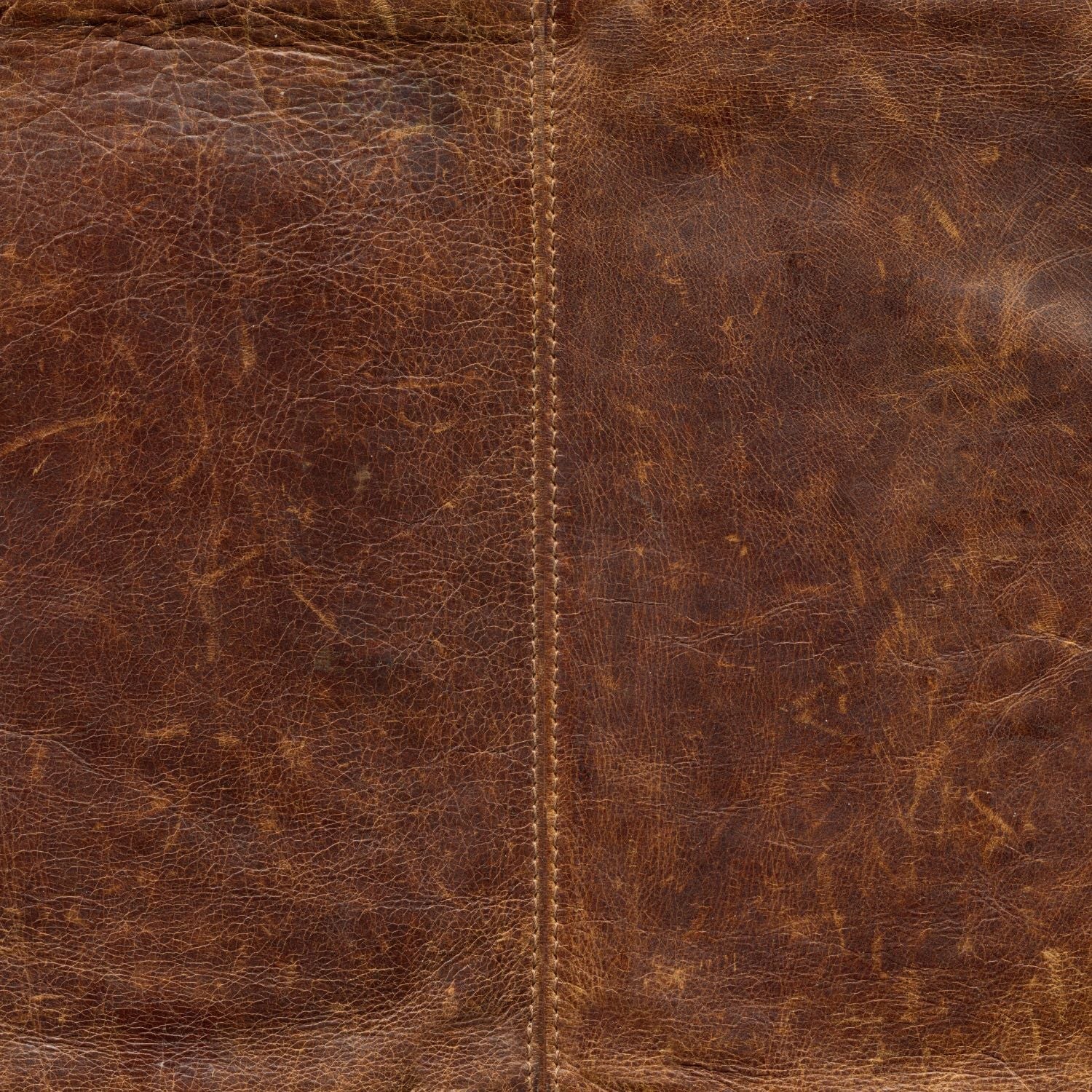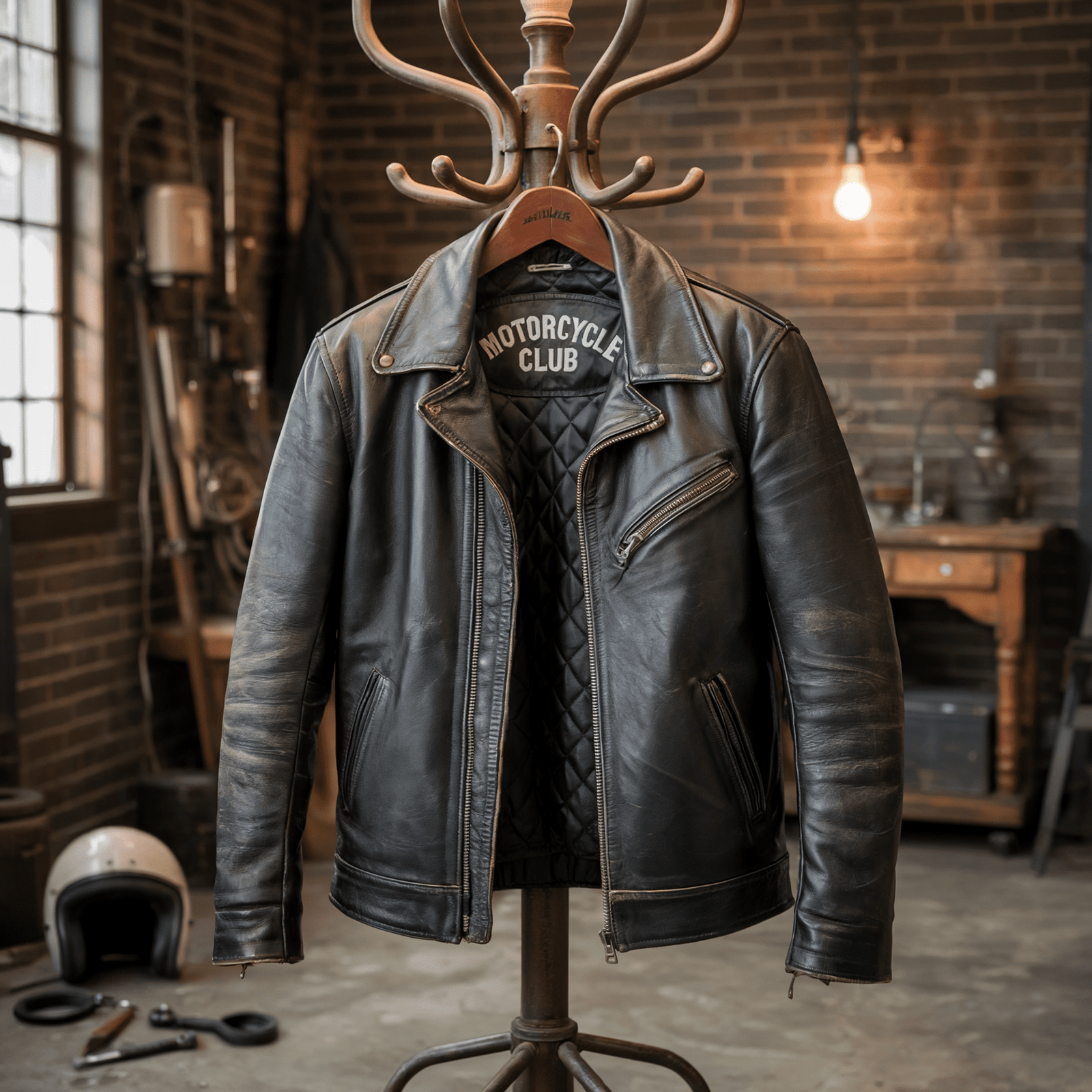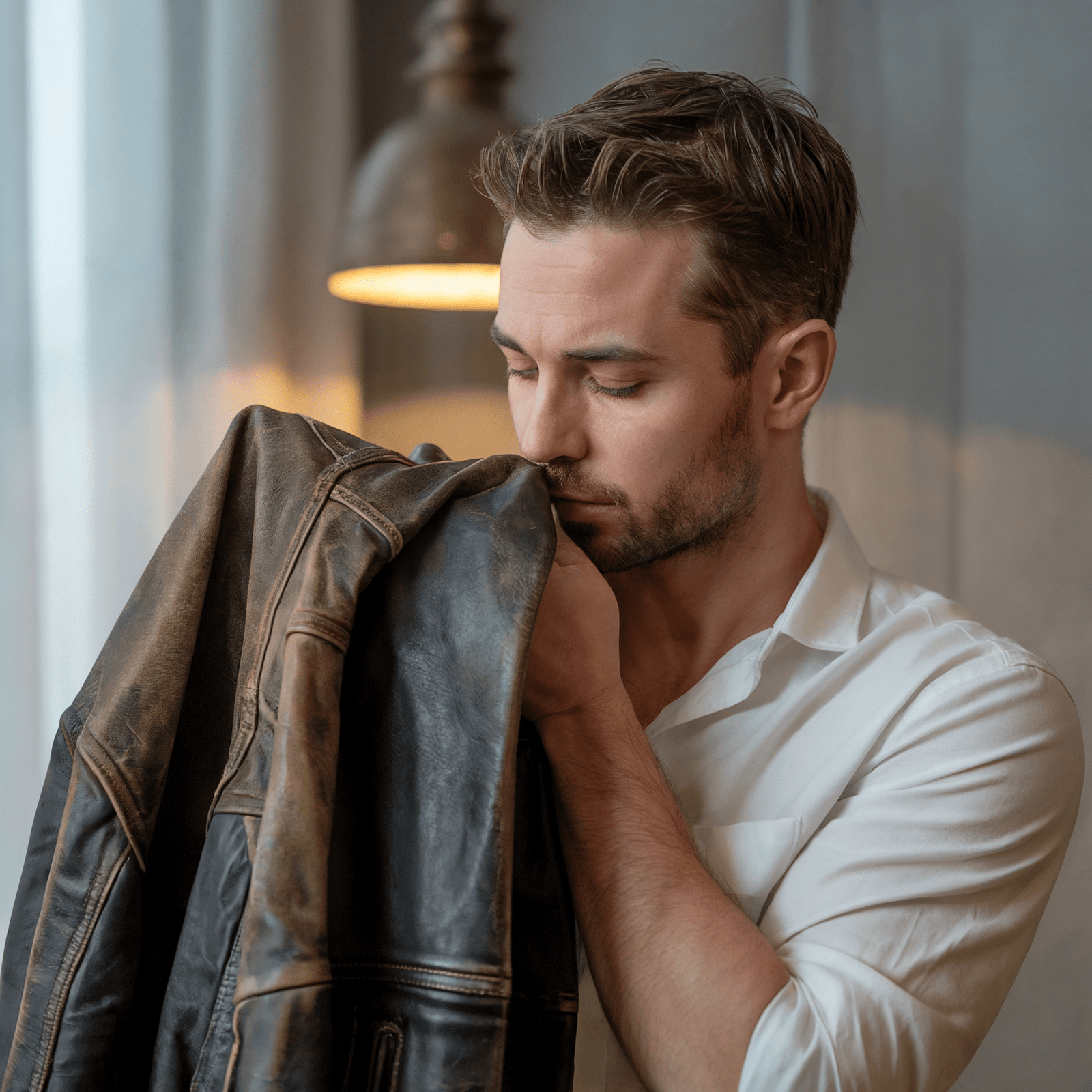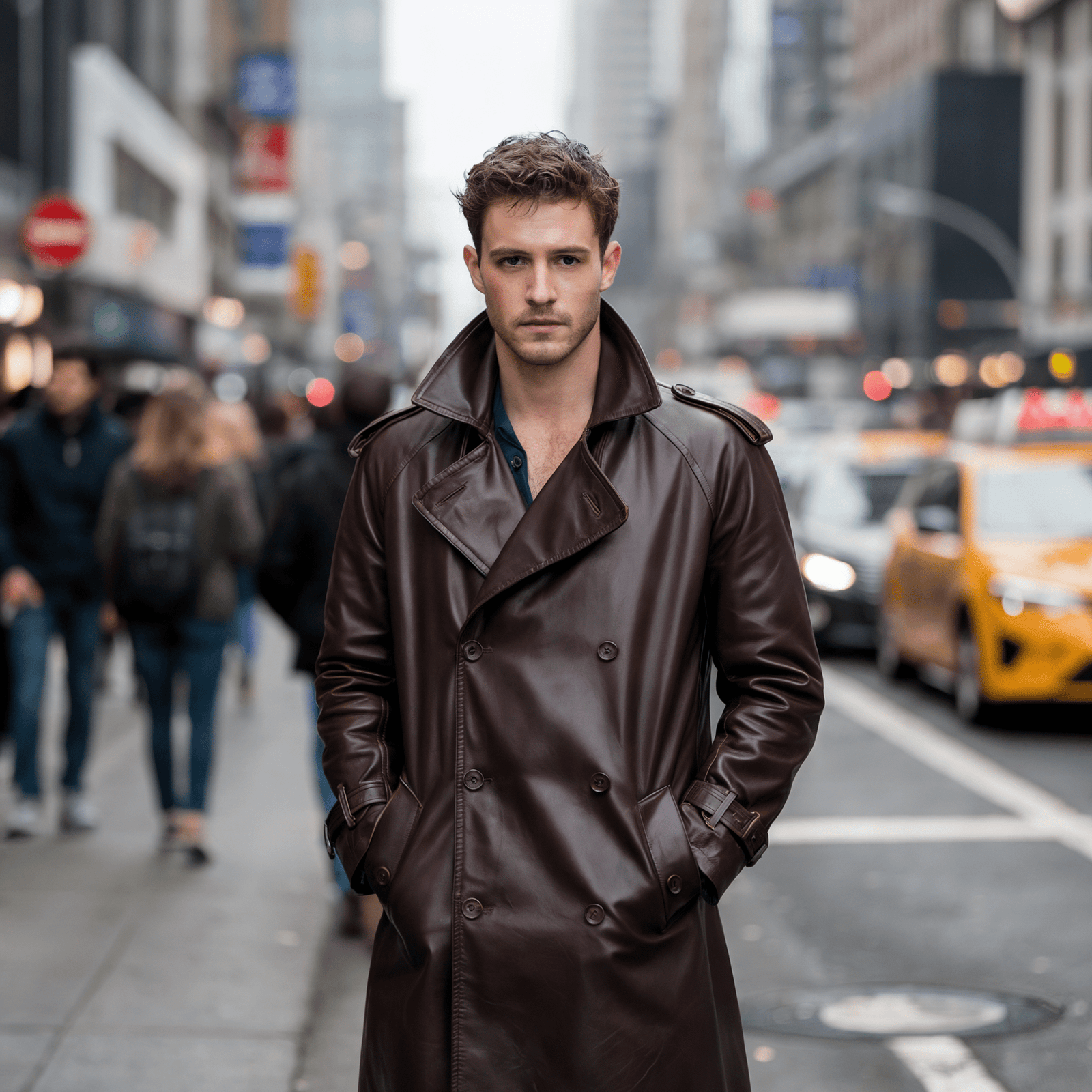Your Cart is Empty
HAPPY HOLIDAYS! SALE 10% OFF - USE COUPON HOLIDAYS AT CHECKOUT NOW!
Menu

HAPPY HOLIDAYS! SALE 10% OFF - USE COUPON HOLIDAYS AT CHECKOUT NOW!

From Full Grain to Bonded Leather: Everything You Need to Know About Leather Grades
by Jennifer Smith June 23, 2023 7 min read
Brands and manufacturers selling leather products use certain terms to define leather quality, which seems like jargon to a layman. Not knowing the meaning of these terms may result in you interpreting them incorrectly, giving shady sellers a chance to mislead you. Even worse, you may end up paying a hefty amount for a subpar quality product. So whether the label says full grain, corrected grain leather, or genuine leather, we will make things clear once and for all in this blog.
What are the Grades of Leather?
In the simplest of definitions, leather is categorized into different grades depending on the quality. You can assess the quality of leather via different parameters, such as the type of hide used, or the tanning and finishing procedures chosen to make it.

The hide of the animal in its original form has a natural grain and hair on the surface. It consists of layers, including the outer epidermis, the inner corium, and the subcutaneous fatty layer above the flesh. Grades define the leather quality levels according to whether any of the layers have been sanded down or removed.
High quality leather material is the one where the outer layer is left intact, and no sanding or buffing has been done. If the grain is corrected and layers are removed, the quality keeps going down. Types of leather qualities in lower grades are composed of scraps of leftover real leather and leather dust, which do not match the durability of premium grades of leather.
Based on grain and quality, there are five types of leather grades. Full grain, top grain (or corrected grain leather, split grain, genuine leather, and bonded leather.
Full Grain Leather

The best among all grades of leather is full grain leather. It is known for its durability, exquisite look and feel. These features are due to the presence of the natural grain of animal hide that has not been buffed. If the animal hide has any imperfections, such as scars and marks, they are retained in the final look of the full grain leather.
In the pre-industrialization era, there were no equipment to split leather or sand down its surface to make refined grain and lower quality leather. Full grain was the only option available in those days, unlike today, when several grades of leather with lesser quality are produced and widely used.
The process of making full grain leather includes shaving the hair on the skin, curing, and tanning the leather. The aniline leather is made using soluble dyes on full grain leather. Semi aniline finish, including a top coat of pigment, is also used for full grain leather.
Full grain leather has amazing qualities, including moisture resistance, incredible tensile strength, and smooth surface, and the quality of getting better over time. As full grain leather ages, it will develop a rich, darker look known as patina.
Top Grain Leather (Corrected Grain)

Another high quality grade of leather is top grain, made by buffing the topmost grain layer of the animal skin. Top grain is a sought after choice for most leather goods due to its strength and appearance.
To make top grain leather, the hair on the hide is shaved, and the hide then undergoes splitting. The thick outer layer is then sanded down to eliminate any imperfections. The tanning process then turns the otherwise perishable hide into preserved, durable leather using chemicals and tanning agents. Top grain leather gets its actual texture and feel during this process.
After tanning, top grain leather undergoes dyeing and finishing procedures to enhance its appearance and give it added durability. Finishing makes top grain leather resistant to water and stains.
Corrected Grain Leather
The term corrected grain is also used for top grain leather, although it is the name given to the type which goes an additional step of grain correction. During this step, an artificial grain is embossed or imprinted on the surface of top grain leather to give it a uniform look. Stamping artificial grain hides the cosmetic imperfections naturally present on the leather surface, such as scars or blemishes.
Corrected grain has a high level of durability. However, it doesn’t feel as soft as full grain due to the buffing process it undergoes. Also, it won’t develop the patina after aging that full grain leather is known for. Corrected grain leather may be a suitable choice if you want refined grain leather products with significant resistance to wear and tear.
Nubuck Leather
Like corrected grain, nubuck is also a form of top grain leather. It is one of the softest leathers, known for its velvety texture. To make nubuck, the outer layer of the hide is buffed until a velvety soft touch is formed. Cowhide is mostly used to make nubuck leather.
Novices often confuse nubuck with suede. The difference between these two types is that nubuck is made from the outer surface grain side, while suede is made by buffing the corium side of the hide. A downside of using nubuck is that it scratches and stains easily and is difficult to maintain.
Split Grain Leather
During the beam house procedures, the animal hide is cured and splitted. Layers removed for full grain or top grain leather leave behind corium, the layer just above the fat and flesh of the animal. This makes the split grain leather. Split grain leather from the corium is soft but lacks the durability that the upper layers of the hide possess. As it is highly prone to staining, finished split leather products are high maintenance.
Suede

If the corium surface is buffed, suede is created. Suede is a popular leather type known for its fuzzy texture and softness. It is widely used for leather products that are to be embossed. For maximum durability, opt for suede made with cowhide, as goatskin or lambskin produce vulnerable suede.
Genuine Leather
Although genuine leather is made with the real hide of animals, the name is misleading if you want a premium quality, long lasting product. Made with the leftover layer of the hide after removing the top grain, genuine leather is treated with color sprays and artificial grain, which gives it a finished look mimicking real leather. As opposed to the warm feel of real leather, genuine leather has a cold, stiff feel.
Usually, mid range price products are made with genuine leather, as high end ones are made using full grain or corrected grain leather. As a result, the consumers get affordable genuine leather products, satisfying their wish to own a real leather product. However, if you want a product that would last a lifetime without getting damaged, beware of the “genuine leather” label.
Bonded Leather
Coming on the fifth position after genuine leather, the bonded leather is made with leather scraps left from manufacturing. All the shredded scraps or leather dust is combined with a bonding solution, usually polyurethane, and spread over a cloth backing. After the mixture is uniformly spread, it is embossed with an artificial texture to look like top grain leathers. The resulting material is 50% animal hide and 50% synthetic leather, and is not as sturdy as full grain leather.
Bonded leather is mostly used for products like shoe soles, heels, or the lining of leather garments.
Choose Desired Leather Grade for Your Jacket
When it comes to purchasing a leather jacket, quality should be your top priority. Whether you prefer the low cost split grain leather, genuine leather, or bonded leather. Or, if you only want full grain leathers or top grain leathers, leather grades decide the quality of your jacket. Settling for a lower grade of leather is not recommended, as that would impact the durability, texture, comfort, and appearance of your garment. By choosing your preferred leather grade from Leather Skin Shop, you can ensure that your custom made leather jacket will look great and stand the test of time.
FAQs
List the various leather grades?
Leather grades are sorted based on the processing they undergo. There are five types of leather grades, starting from full grain, top grain, split grain, genuine leather, or bonded leather.
What are the different levels of leather quality?
The topmost quality of the leather is full grain leather, which is the hide with its original grain. Full grain is followed by top grain, split grain, genuine, and bonded leather.
Which grade is regarded as the best quality of leather?
Full grain leather is considered the best quality of leather. Acquired from the topmost layer of the skin, full grain leather is incredibly strong, breathable, and has a characteristic grainy feel. As it ages, full grain gets even better as it breaks in to become comfortable and develops a spectacular sheen known as a patina.
What is the first grade of leather?
The first grade of leather is full grain leather. It is the topmost layer of the skin and is made without sanding down the original grain present on the surface.
What is the second grade of leather?
If the surface grain is buffed to create a uniform look, the second grade of leather is created. It is known as the top grain or corrected grain leather.
What is the third grade of leather?
The third grade of leather is split grain leather, which is the layer of corium left after scrapping off the dermis for corrected grain leather or full grain leather. Suede leather is a type of finished split leather that is sanded to create a fuzzy nap.
What is the fourth grade of leather?
The fourth grade of leather is genuine leather, typically made from the lower layers of the hide that have been split away from the top grain leathers.
What is the fifth grade of leather?
The fifth grade of leather is bonded leather, also known as reconstituted leather. Bonded leather is made with a composition of leather scraps and polyurethane spread on a backing of paper or fabric.
Conclusion
The properties and characteristics of a leather good largely depend on the grade of leather used to make it. Different types of leather quality levels determine the cost and durability of the product, as full grain leather grade doesn’t come cheap. Lower grades of leather are also widely used to make cost effective goods, but the durability and rich texture is compromised in these products.
Leave a comment
Comments will be approved before showing up.
Also in Blog | Leather Skin Shop

Types of Sleeves in a Leather Jacket
by Jennifer Smith August 24, 2025 6 min read
The different types of sleeves shape the shoulder, control the movement, and change how the leather jacket looks in motion. There are various types of sleeves, such as cap sleeves, bell sleeves, raglan sleeves, and more.

How to Get Smell Out of Leather Jacket?
by Jennifer Smith August 08, 2025 4 min read
Over time, a leather jacket can smell like sweat, mildew, or smoke. But do not worry, there are safe, proven ways to get rid of those unpleasant smells at home.

What Is A Trench Coat
by Jennifer Smith August 02, 2025 6 min read
A trench coat is a long, lightweight outerwear piece designed to protect against wind and rain. Its defining features include a double-breasted front, a belted waist, wide lapels, and often epaulets and a storm flap.
Leather Jackets for Men
Leather Jackets for Women
Accessories for Men & Women
Recent Articles
- Types of Sleeves in a Leather Jacket
- How to Get Smell Out of Leather Jacket?
- What Is A Trench Coat
- What Is A Peacoat Jacket?
- What is Polyester Fabric?
- What is Satin Fabric?
- What is Shearling Leather?
- Varsity Jacket Or Letterman Jacket? Everything You Need To Know Before Buying
- What is Semi Aniline Leather?
- What Is Cotton Fabric?
Size Chart